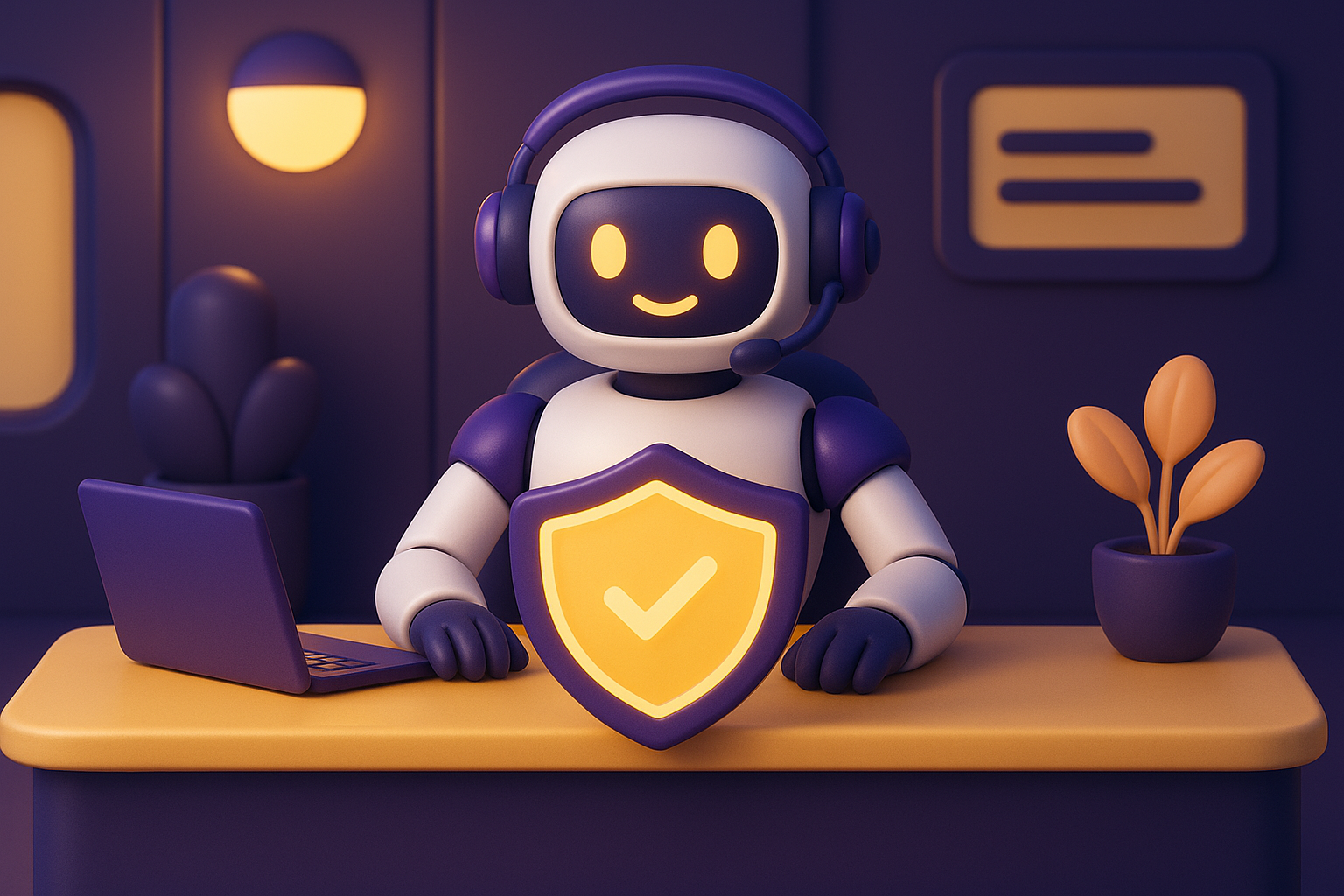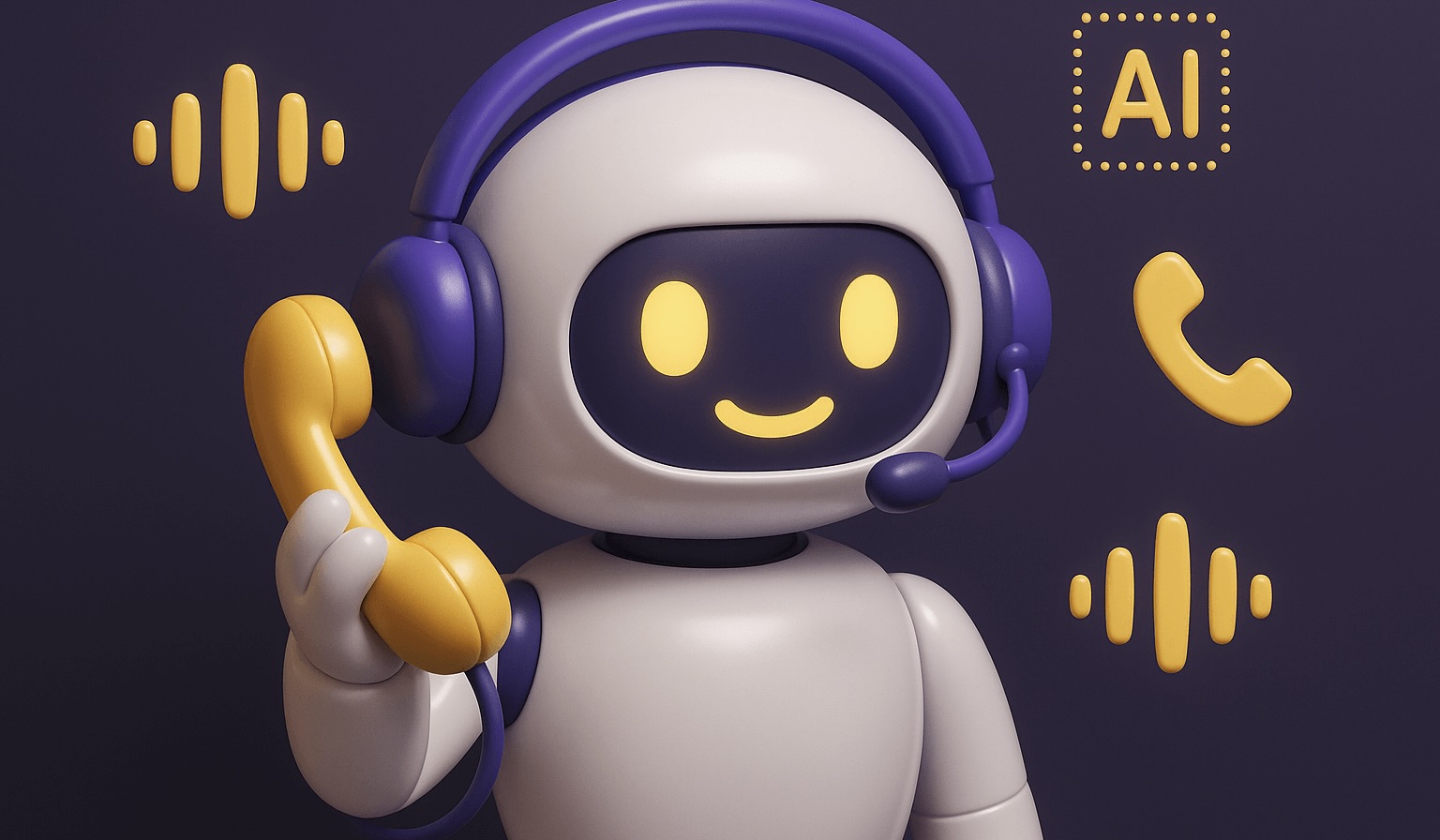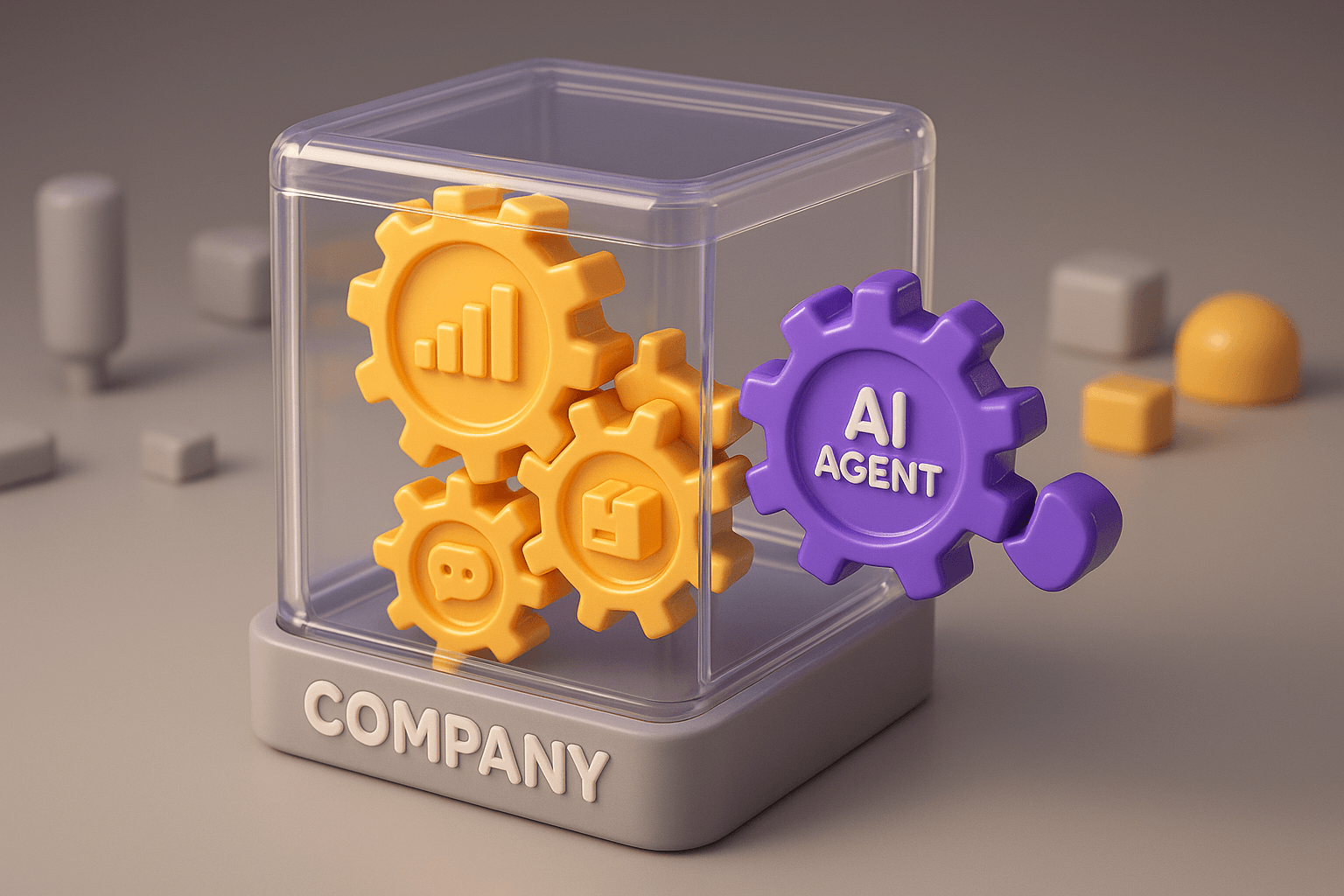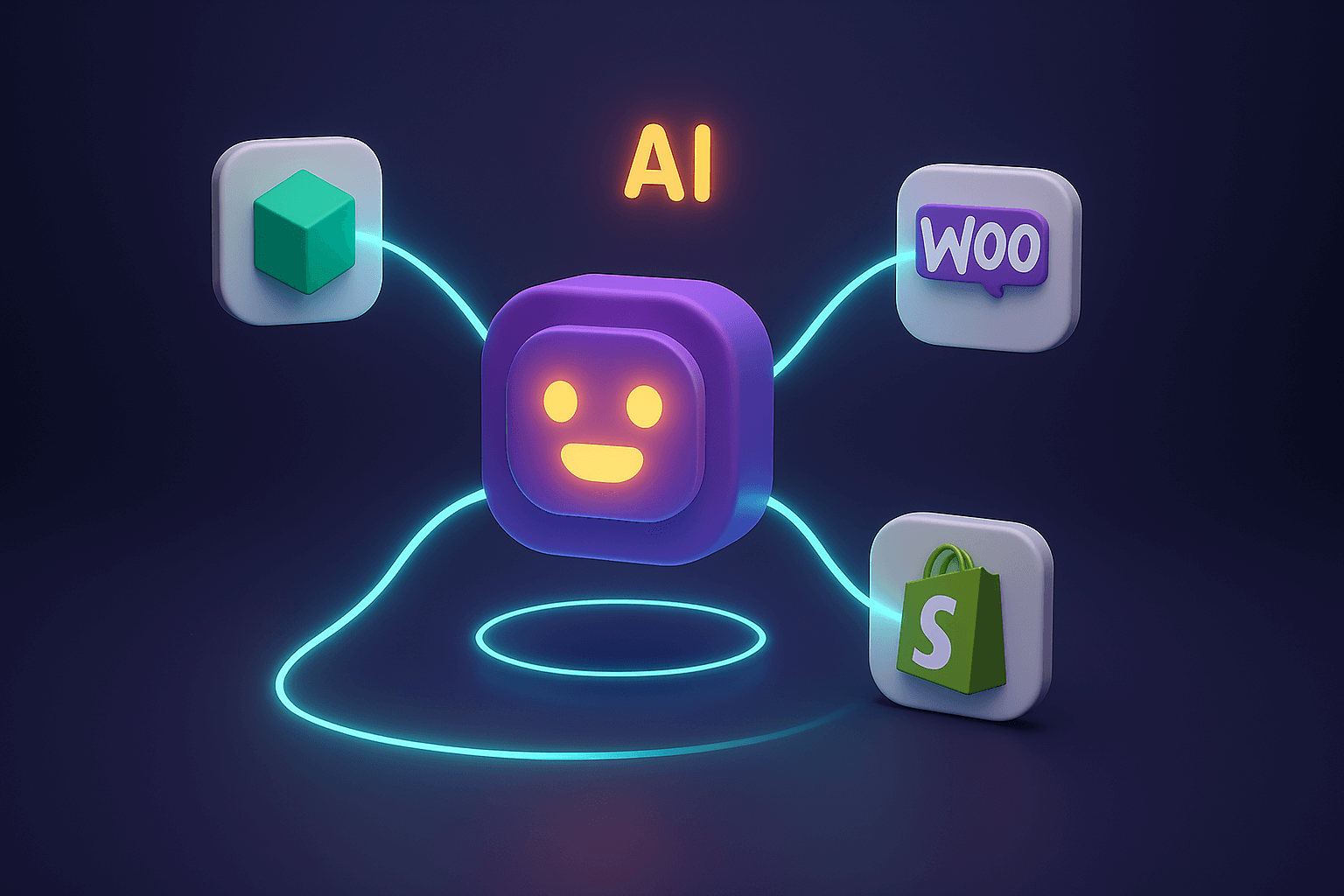Many companies hesitate to deploy AI chatbots because they worry the bot might say nonsense, come across as unprofessional, or even damage the brand. The truth is different: modern AI chatbots are designed with a focus on safety, reliability, and control. Thanks to built-in guardrails, content moderation, and brand tone configuration, you don’t have to worry about your AI chatbot saying anything inappropriate to customers. On the contrary, it works as an extension of your team — it stays within clearly defined boundaries, protects your company’s reputation, and strengthens customer trust at the same time. In this article, we’ll show why AI chatbots are safe for your business and why they’re worth adopting without hesitation.
How AI chatbots protect your company’s reputation
AI chatbots are now an essential part of many companies that want to improve customer service while protecting their brand. To ensure safety and trustworthiness in communication, modern AI chatbots are designed to follow strict rules and standards. These chatbots can handle complex questions and provide consistent answers that match your brand’s values and tone. This minimizes the risk of the chatbot providing inappropriate or unprofessional information.
One of the main ways AI chatbots protect a company’s reputation is through precise tone-of-voice configuration. The chatbot is programmed to respond based on predefined rules and guidelines that reflect your brand’s values and image. This means the chatbot will communicate with your customers in a way that aligns with your company culture and standards, ensuring consistent and professional interactions.
Another key factor is content moderation. AI chatbots are equipped with advanced algorithms and filters that actively monitor and block inappropriate or harmful replies. In this way, the chatbot avoids any comments or responses that could damage your brand or customer relationships. This process ensures that all interactions remain safe, professional, and in line with your company’s standards.
When the chatbot should hand the conversation to a human
Despite the advanced capabilities of AI chatbots, there are situations where it’s better for a human operator to take over the conversation. AI chatbots are designed to recognize moments when human interaction would be more appropriate or necessary. This approach not only protects the quality of customer service, but also ensures that customers feel adequately supported and valued.
One of the main situations where a chatbot hands over to a human is when dealing with complex or sensitive issues. Some inquiries or complaints may require a human touch to ensure understanding and empathy. AI chatbots are programmed to recognize these situations and quickly transfer the conversation to a qualified human operator who can provide the necessary help.
Another situation is when a customer explicitly requests to speak with a human. AI chatbots can detect such requests and respond immediately. This approach not only increases customer satisfaction, but also strengthens trust in your company’s customer service. Automation and human interaction thus become perfectly balanced, leading to an efficient and safe customer experience.
AI chatbots and personal data protection (GDPR, privacy)
Personal data protection is a key aspect when using AI chatbots. Since chatbots can process large amounts of sensitive information, it’s important that they are designed with strict security standards and compliance with legal regulations such as GDPR. This approach ensures that customers’ personal data is protected and processed in accordance with applicable laws.
AI chatbots are equipped with technologies that ensure the secure processing and storage of personal data. Data is often encrypted and access is limited to authorized personnel only. This minimizes the risk of unauthorized access or data leaks, which is especially important for maintaining customer trust in the security of their personal information.
In addition to technical measures, AI chatbots are programmed to follow data-minimization principles. This means they collect only the information necessary to provide quality customer service and do not retain sensitive personal data longer than necessary. This approach ensures that the company not only meets legal requirements, but also demonstrates a responsible approach to protecting its customers’ privacy.
Configuring tone of voice according to your brand
One of the key ways AI chatbots help protect your company’s reputation is by configuring the tone of voice according to your brand. Chatbots can adapt their communication style to match your company’s values and image. This process involves careful analysis and the implementation of specific rules that enable chatbots to communicate in a way that is consistent with your brand.
When setting the tone of communication, it’s important to consider several factors, including language, style, and formality. AI chatbots can be programmed to use specific expressions and phrases characteristic of your brand. This ensures that every customer interaction reinforces your company’s identity and creates a consistent experience.
Another important aspect is the chatbot’s ability to adapt tone based on context. For example, if a customer contacts support with a serious problem, the chatbot can use an empathetic and supportive tone. Conversely, for routine inquiries or informational responses, the tone can be more formal and professional. This flexibility allows chatbots to respond effectively to different situations while maintaining a consistent brand style.
Content moderation and blocking inappropriate replies
Content moderation and blocking inappropriate replies are key AI chatbot features that ensure safe and professional communication. Chatbots are equipped with advanced algorithms that can detect and block inappropriate or harmful responses in real time. This ensures that all interactions remain safe and aligned with your brand values.
One of the main ways chatbots moderate content is by using predefined lists of banned words and phrases. These lists are continuously updated based on current trends and user feedback. When the chatbot detects a banned word or phrase, it automatically interrupts the conversation or provides a neutral response that minimizes the risk of inappropriate content.
Another important technology is the use of machine learning and artificial intelligence to recognize the context and intent of messages. This approach enables chatbots to better understand complex queries and identify potentially harmful or inappropriate responses. As a result, chatbots can moderate content more effectively and ensure that every interaction is professional and safe.
Guardrails: how the chatbot keeps the conversation on topic
Guardrails are an important tool that helps chatbots keep the conversation on the right topic. These mechanisms ensure the chatbot follows predefined guidelines and rules, which minimizes the risk of deviating from the main topic or providing inappropriate information. Guardrails are crucial for maintaining consistency and quality of communication.
One of the main ways guardrails work is through specific conversational scripts. These scripts are carefully designed to cover various scenarios and questions customers may ask. The chatbot is programmed to follow these scripts and respond based on predefined rules. This ensures the chatbot provides relevant and accurate answers.
Another important aspect is the chatbot’s ability to recognize when the conversation is drifting off topic. When the chatbot detects that a customer is trying to change the subject or ask a question outside the predefined scope, it can gently steer the conversation back on track. This ensures the chatbot stays on task and provides valuable, relevant information.
Why AI chatbots don’t say inappropriate or offensive things
AI chatbots are designed to avoid providing inappropriate or offensive responses. This is achieved through a combination of technologies and approaches that ensure the chatbot communicates professionally and respectfully. This process is crucial for maintaining customer trust and satisfaction.
One of the main ways this is achieved is by using predefined rules and filters. Chatbots are programmed to recognize and block inappropriate words and phrases. These rules are continuously updated based on feedback and current trends. When the chatbot detects a potentially offensive expression, it automatically filters it out and provides a neutral or appropriate response.
Another important technology is the use of machine learning and artificial intelligence to analyze the context and intent of messages. This approach allows chatbots to better understand complex queries and identify potentially offensive or inappropriate responses. As a result, chatbots can moderate content more effectively and ensure that every interaction is professional and safe.
How AI chatbots operate within your business
AI chatbots can significantly improve your business operations by automating routine tasks and increasing the efficiency of customer service. Thanks to advanced machine learning and artificial intelligence, chatbots can handle a wide range of questions and issues, freeing human operators for more complex tasks.
One of the main benefits of AI chatbots is their ability to provide quick and accurate answers to common questions. Chatbots are programmed to access specific information and databases, enabling them to respond quickly to customer inquiries. This improves the customer experience and reduces waiting times for answers.
Another important benefit is the chatbot’s ability to operate continuously. Unlike human operators who need breaks and rest, chatbots can work 24/7. This means customers can get support at any time, increasing their satisfaction and trust in your company. This around-the-clock service is especially useful for global companies serving customers across different time zones.
What a safe AI chatbot means (concept introduction)
A safe AI chatbot is a system designed and implemented with the highest security and data protection standards in mind. This concept includes several key aspects, such as personal data protection, prevention of inappropriate responses, and the ability to adapt to your company’s specific needs and values. A safe AI chatbot is essential for maintaining customer trust and protecting your brand’s reputation.
One of the main pillars of a safe AI chatbot is personal data protection. This includes data encryption, limiting access to authorized personnel only, and compliance with legal regulations such as GDPR. This approach ensures that customers’ sensitive information is protected from unauthorized access and data leaks. A safe AI chatbot must be equipped with robust security technologies that minimize the risk of cyberattacks.
Another important aspect is the ability to prevent inappropriate responses. A safe AI chatbot is designed to recognize and block inappropriate or offensive comments. This is achieved through a combination of predefined rules, filters, and advanced machine-learning algorithms. This approach ensures that chatbots communicate professionally and respectfully, which is key to maintaining customer trust.
An overview of technologies that ensure safety (filters, models, control layers)
Modern AI chatbots use a range of advanced technologies that ensure communication safety and reliability. These technologies include filters, machine-learning models, and control layers that together form a comprehensive protection system. This approach ensures that AI chatbots can provide high-quality, safe services without the risk of inappropriate content or data leaks.
Filters are one of the main tools that ensure AI chatbot safety. These filters are designed to recognize and block inappropriate words and phrases. Using filters allows the chatbot to automatically detect and respond to potentially harmful content, minimizing the risk of inappropriate replies. Filters are continuously updated based on feedback and current trends, ensuring their effectiveness.
Machine-learning models are another key technology that ensures chatbot safety. These models are trained on large amounts of data, enabling them to recognize patterns and contexts in communication. As a result, chatbots can better understand complex queries and identify potentially inappropriate responses. Machine-learning models are continually improved, ensuring their ability to moderate content effectively.
Control layers are another important part of the AI chatbot security system. These layers act as an additional safeguard that monitors and analyzes all communication in real time. Control layers can detect anomalies and potential threats, enabling a rapid response and prevention of problems. In this way, chatbots provide consistent and safe customer service.
The most common myths about “dangerous” AI chatbots
There are many myths surrounding AI chatbots that often prevent companies from deploying them. One of the most common is the fear that a chatbot might say something offensive or unprofessional. In reality, modern AI chatbots are equipped with filters, guardrails, and content moderation that minimize such situations. Another myth is that a chatbot replaces human interaction — a properly configured AI chatbot works as the first line of support and hands the conversation to a human when needed.
It’s also often believed that AI chatbots aren’t suitable for smaller businesses. The opposite is true — thanks to their flexibility and customization options, they can help smaller companies improve customer service and reduce costs. The myth of “dangerous” AI chatbots thus stems more from unfamiliarity than reality.
Why AI chatbots pay off in terms of customer trust
AI chatbots are not just a tool for saving time and money; they’re also a significant factor in building customer trust. Because they communicate consistently, professionally, and in line with your brand values, they strengthen customers’ sense of reliability and confidence. People appreciate receiving clear and accurate answers without unnecessary waiting.
Trust is also reinforced by a transparent approach: if the chatbot doesn’t know the answer, it doesn’t try to make things up — it offers an alternative or hands the conversation to a human operator. This style of communication shows that your company values fairness and quality service. Ultimately, AI chatbots pay off not only economically, but also in terms of building long-term customer relationships.
Conclusion: why AI chatbots are safe for your business
AI chatbots are no longer an experimental technology that companies need to fear. Thanks to modern guardrails, filters, personal data protection, and brand-aligned tone settings, they represent a reliable and safe tool for customer service and business processes. A properly implemented AI chatbot not only protects your company’s reputation, but also increases efficiency and strengthens customer trust.
So if you’re considering deploying an AI chatbot, there’s no reason to hesitate. The technology is ready, safe, and adaptable to your specific needs. An AI chatbot can be your reliable digital colleague, working 24/7 and always in line with your brand values.




